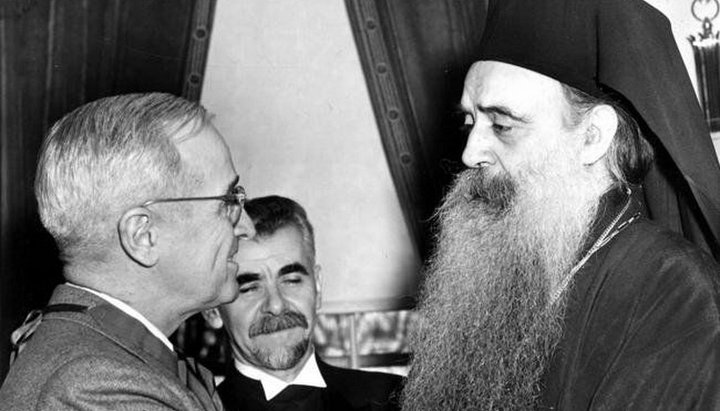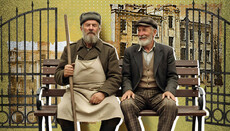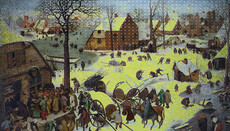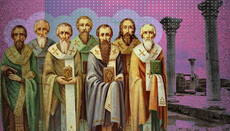Phanar in XX century: in search of the flock, money and patrons

Having lived through two unions and interaction with dissenters of various stripes, the Patriarchate of Constantinople found reliable patrons in the US State Department.
Phanarians like to repeat that "the Patriarchate of Constantinople embodies the true etat (essence, crux – Ed.) of Orthodoxy". However, upon a closer view this "etat" looks very contradictory, if not more. Maybe, not the main but a very obvious side of it is corruption, no matter how bitter it may sound. And the recent actions of Constantinople in Ukraine are a logical continuation of its policy throughout the 20th century.
But first – a significant reservation. Orthodoxy owes much to the Patriarchate of Constantinople. From the depths of this Local Church came the host of saints: martyrs, saints and venerables. The Orthodox world is obliged to the Church of Constantinople for its liturgical rite, monastic rule, and theological tradition.
It is hard to imagine what today's Orthodoxy would be like without the Patriarchs of Constantinople –John Chrysostom, Gregory the Theologian, Photius the Great, without Ven. Theodore the Studite, Athanasius and Peter of Athos, without Andrew fool-for-Christ, and many others.
The clergy and laity of the Church of Constantinople managed to preserve Orthodoxy during the five hundred year Ottoman rule. Many generations of these people endured lawlessness, humiliation and threats to life, but did not renounce Orthodoxy.
However, the same cannot be said about the conventional top of the Patriarchate of Constantinople, which, even during the times of the Byzantine Empire, was mired in intrigues and power struggles, while being under the rule of the Turks, it turned into a corrupt appendage of the Turkish bureaucratic system. The picture turned out to be rather unsightly: the grassroots and the clergy who remained loyal to Orthodoxy against all the odds, and the administrative elite of the Constantinople Patriarchate who were spinning various political intrigues and were not quite scrupulous about the means.
But that would be half the trouble: this is what happens in many human communities. The trouble came at the beginning of the 20th century, when these administrative elite lost its flock.
In the 1920s, as a result of the First World War, the collapse of the Ottoman Empire, the genocide of Greeks and Armenians in Asia Minor and the population exchange between Turkey and Greece, almost no Greek population remained in Turkey, and the Patriarchate of Constantinople was separated from the Turkish state mechanism. Thus, Phanar lost its flock, patronage of the authorities and livelihood. By and large, it lost even more – the very purpose of its existence. And so, Phanar began frantically searching for what the lost would be replaced with.
In search of the flock
According to the census of 1914, 1.8 million Greeks lived in Turkey, which accounted for 8.5% of the total population of the Ottoman Empire. After the Asia Minor catastrophe, in which about 700 thousand Greeks were brutally killed, and the population exchange which resulted in the departure of almost all other Greeks from Turkey, the Patriarchate of Constantinople remained without its flock. French historian Edouard Drio wrote that "the Asia Minor catastrophe was more widespread and more terrible than the fall of Constantinople."
Under these conditions, the Phanar hierarchs began to look for who would compensate for their lost flock. The part of the Greeks, who immigrated from Asia Minor to Greece, naturally joined the Hellas Orthodox Church, which separated from Constantinople in 1833 and was recognized by Phanar in 1850.
In the jurisdiction of Constantinople remained the Greeks, who went to the countries of Western Europe and the United States, i.e. the countries in which there were no historical Local Orthodox Churches.
And then the Phanarians came up with the idea of declaring all the Orthodox without exception under Phanar’s jurisdiction, who somehow appeared in the countries where there was no Local Church (regardless of their wishes and those of the Church whose canonical territory they left).
Just at that time, as a result of the October Revolution of 1917 and the civil war that followed, millions of migrants, hundreds of priests and dozens of bishops left Russia. Countries which used to be part of the Russian Empire, declared their independence. Poland, Finland, Estonia, Latvia, Lithuania not only separated from Russia, but also began to pursue an explicitly anti-Russian policy. The Orthodox Churches in these countries became a bargaining chip in the hands of local authorities and Phanarian hierarchs. Some forced the clergy and the episcopate to sever all ties with the Russian Orthodox Church; others declared them to be under their jurisdiction.
The position of the believers themselves, the episcopate and the clergy was totally disregarded. Consequently, in 1923, Phanar “acquired” the Finnish Orthodox Church, which at that time was autonomous within the Russian Orthodox Church.
In the same year, Phanar annexed the Estonian Orthodox Church (now the Estonian Apostolic Orthodox Church), which applied to Phanar for autocephaly but ended up with being an Estonian Orthodox Metropolis within Phanar.
In the 1930s, nearly the same scheme was implemented in Latvia, where the Latvian Orthodox Church was set up under the jurisdiction of Constantinople.
As for Poland, the Patriarchate of Constantinople, relying on the support of local authorities, granted autocephaly to the Polish Orthodox Church. Without going into details of Polish history, one can say that this autocephaly was concocted using threats, deception and violence. In 1948, the Polish hierarchs brought repentance to the Moscow Patriarch Alexy and subsequently they received legitimate autocephaly from the Russian Orthodox Church.
In February 1931, Phanar appropriated Russian overseas parishes, which were under the jurisdiction of the Russian émigré Metropolitan Eulogy (Georgievsky). In this case, another deception was committed. When Metropolitan Eulogy was admitted to the jurisdiction of Phanar without the consent of the Russian Orthodox Church, they strongly emphasized that this was a temporary measure, which was caused by the rightless position of the Church in the USSR. The temporary nature of this jurisdictional subordination was even reflected in the very name of this structure: the Provisional Exarchate of the Holy Apostolic and Patriarchal Throne of Constantinople in Western Europe.
However, when in 1945 Metropolitan Eulogy wished to return to the bosom of the Russian Orthodox Church, Constantinople did not give him a permission letter. On top of that, the Archdiocese of the Orthodox Russian churches in Western Europe is not only still under the jurisdiction of Constantinople but also lost the status of an exarchate by the decision of the Synod of Constantinople of November 27, 2018.
In search of patrons
Here we should also make a digression and recall that the Byzantine Empire more than once resorted to the help of various states and tribes. Of course, it was necessary to pay for this assistance: with money, territories, military trophies, with various ranks and titles.
But there were cases when Orthodoxy had to paid with. So it was in 1274 when the Union of Lyons was concluded. The prerequisites for it were the following circumstances.
In 1204, during the Fourth Crusade, the Crusaders captured Constantinople. By the way, this seizure was accompanied by slaughter, violence, looting and the destruction of cultural and art monuments. According to historical documents, the cruelty of the Crusaders far exceeded the excesses of the Turks during the seizure of Constantinople in 1453.
But in 1261 the Byzantine emperor Michael VIII Palaeologus (1259-82) conquered the capital of the empire. The Latin emperor in Constantinople, Baldwin II, fled to the West and began asking Pope Urban IV to organize another crusade against Byzantium. Pope gave him full support, and the European rulers began to prepare for war against Byzantium. To prevent this threat, Michael VIII Palaeologus sold Orthodoxy to the Pope. Patriarch Joseph of Constantinople, who opposed the union, was declared deposed and was replaced by obedient John XI Vek, who agreed with the union, was put in his place.
So it was in 1439, when the threat of conquest by the Turks hung over Constantinople and the emperor John VIII Palaeologus urgently needed military and financial assistance to fight them. At that time, the Byzantines also paid off with Orthodoxy, which, however, did not bring any benefit – in 1453 the Byzantine Empire ceased to exist.
To the credit of the clergy and common people, it must be said that they did not accept either the Lyons or Florence Union. But the top of the Patriarchate of Constantinople did not stop at the betrayal of their faith.
At the beginning of the 20th century, Phanar, which had fallen out of the government of the Ottoman Empire, tried to find patrons in the person of the British empire, which was at that time one of the most powerful world powers. For this, the Phanarians began to develop a project of a new union, but no longer with the Roman Church, but with the Anglican.
In order to bring them closer to the Anglicans, Patriarch Meletius IV (Metaksakis) assembled a Pan-Orthodox Congress, which consisted of seven bishops, one archimandrite and two laymen. This congress decided to switch to the new Julian (in fact Gregorian) calendar, according to which Anglicans lived, and to determine the date of Easter, based on “scientific data”. However, the UK did not provide any significant assistance to the Phanarians and the union project was frozen.
The next potential patron for Phanar was considered ... USSR. Despite the fact that the Soviet government from the very beginning declared itself an enemy of the Church, Phanar for several years tried to enlist the support of the Bolsheviks and diligently fulfilled their wishes to recognize the Renovationist "Church". Although it was clear to everyone from the very beginning that “Renovationism” is a tool of the OCU, created with the aim of destroying Orthodoxy.
But in the eyes of Phanar, this was acceptable because at that time, in the early 20s, the Soviet government was the only one to have influence on the new revolutionary government of Turkey led by Kemal Ataturk.
The Patriarchate of Constantinople even went so far as to call on the holy confessor Patriarch Tikhon to resign and hand over power to “Renovationists”. All this was done in order for the Bolsheviks to persuade Ataturk not to pursue a policy of persecution of the Patriarchate of Constantinople. It looks very ugly: to help the Bolsheviks destroy the Russian Orthodox Church in exchange for their persuading the Turks not to destroy Constantinople. But here Phanar got disappointed as well: the Bolsheviks did not intend to help Constantinople at all.
Finally, in the 40s, Phanar found itself a patron – the US Department of State. More precisely, they both found each other. In 1948, American diplomats, acting through the Turkish and Greek authorities (all of these countries were members of NATO), forced the Patriarch of Constantinople Maxim V (Vapordzis) to resign. The real reason is sympathy for the ROC.
In his place, the State Department put an American citizen Metropolitan Athenagoras (Spiru). For his flight to Istanbul, American President Harry Truman (the one who ordered the atomic bombing of Hiroshima and Nagasaki) granted his presidential plane. Immediately upon arrival, Athenagoras was given a Turkish passport, and the next day he became the patriarch of Constantinople.
His devotion to the United States is evidenced by the report of the US Consul General in Istanbul, Robert Makati, to the State Department: “During my first official visit, Athenagoras devoted most of his time to expressing love and admiration for the United States. He came to the fact that he stated that the cornerstone of his activities as a patriarch was the promotion of American ideals. The expression of his admiration for the United States was at times so inappropriate that even I was embarrassed.”
Throughout his work, Patriarch Athenagoras tried to justify the trust of the State Department. He fought hard and consistently with both the Soviet Union and the Russian Orthodox Church. His ecumenism went so far as to deny the existence of heresies as such. “And I do not see them (heresy – Ed.) anywhere! I see only truths, partial, curtailed, which sometimes turned out to be out of place and claim to grasp and embrace an inexhaustible mystery,” he said in an interview with the French historian and theologian Olivier Cleman.
Since then, the influence of the US State Department on Phanar has only increased.
In search of financing
Phanar also found overseas the main source of financing. A large number of Greeks who immigrated from Asia Minor in the 1920s found themselves in the USA. Here the Greek entrepreneurial attitude quickly bore fruit. Today, the Greek diaspora in the United States numbers from 1.3 to 3 million people. Many Greeks made huge capitals, became influential politicians and businessmen.
Below are just some of the names.
• Jim Davis – owner of the shoe company New Balance.
• John Kasimatidis owns a group of companies, including the largest supermarkets in New York and Florida, as well as 400 gas companies and real estate.
• John Pavlos Degioriya – owner of the cosmetology company John Paul Mitchell Systems.
• Spyros Agniopoulos – Vice President of the United States (1969-73).
• George Tenet – director of Central Intelligence and head of the CIA (1997-2004).
• James Stavridis – NATO Supreme Allied Commander Europe Commander (2009-13).
In 1988, ethnic Greek Michael Dukakis was a Democratic presidential candidate. The Greeks, along with the Irish, are one of two nationalities who are allowed to celebrate their holidays in the White House of Washington despite the fact that there are about 30 nationalities in the United States, which are more numerous.
If we recall that the Greek community in Istanbul itself has practically degenerated (today there are approximately 2-3 thousand Greeks living there, mainly the staff of the Patriarchate and their family members), it becomes clear that the financing of Phanar depends on the Greek community in the USA. The Greek lobby, which is firmly embedded in the American political establishment, determines the policy of Phanarians.
As we see, it is carried out to their mutual benefit. However, Orthodoxy as such becomes a bargaining chip, as it was in the past centuries.
What we have got today as a result of the fulfillment by Phanar of the will of its overseas patrons and financiers by Fanar:
• Constantinople claiming supremacy over all Local Churches – what is this, if not a departure from the dogma of the “One Holy Catholic and Apostolic Church”?
• The invasion into the canonical territory of another Local Church – what is this, if not the violation of the Sacred canons, which confined the power of the patriarchs to the boundaries of only their Local Churches?
• Admission of Ukrainian schismatics into communion – what is this, if not the participation of Phanar itself in a split?
• Assigning to oneself jurisdiction over all Ukrainian Orthodox denominations – what is this, if not a violation of the commandment “do not steal”?
This is the back-alley “etat” of the Patriarchate of Constantinople. I feel like thinking it concerns its big league only.











